Land policy and administration
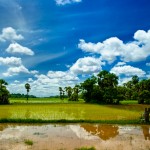
The Royal Government of Cambodia's land policy has three pillars: land administration, land management and land distribution. The objective of the country’s land policy is to facilitate the use and management of land and natural resources for socio-economic development in an equitable and sustainable manner. ...
Decentralization and deconcentration
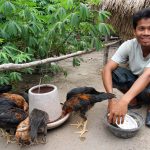
Decentralization and deconcentration are seen as “internally driven” reforms1, where the national government gradually delegates power, involving either administration or finance, to local governments to administer in their locality.27-year-old Sun Sovath supports his family by raising chickens, in Kampong Thom, Cambodia. Photo by World Bank Photo ...
Energy policy and administration
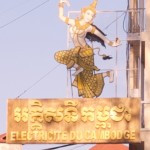
Electricite du Cambodge (EdC). Photo by bmeabroad, taken on 10 November 2011. Licensed under CC BY-NC-SA 2.0.Low electrification rates and over-dependence on fossil fuel imports have contributed to Cambodia ranking 120 out of 124 nations in the new World Economic Forum’s Global Energy Architecture Performance Index ...
Development policies and administration
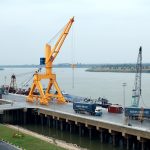
Products from Vietnam arrive at the Phnom Penh Autonomous Port in Kandal province. Photo by World Bank Photo Collection, taken on 23 February 2013. Licensed under CC BY-NC-ND 2.0The Comprehensive Cambodian Peace Agreement, commonly referred to as the Paris Agreement, is seen as the beginning ...
Water policy and administration

In Cambodia, alternate periods of drought and heavy rains bring challenges for water management. The current trends show increasing annual rainfall and temperature throughout Cambodia, with a likelihood that both flooding and droughts will increase in frequency, severity and duration85. Water management involves issues of ...
Civil and commercial litigation
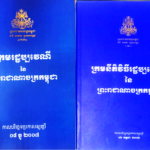
Since 1993, the Royal Government of Cambodia (RGC) has been working to reform the country’s legal framework, and in particular the application of justice, to provide a clear and fixed procedural system to ensure respect for individual rights and equality before the courts.114 In theory, ...
Extractive industries policy and administration
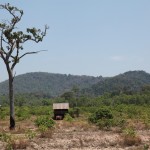
Cambodia’s extractive industries have traditionally operated on a small scale, mostly mining construction materials, gold or gemstones. While commercial production of minerals or oil has yet to begin on a large scale – these products made up just 0.1% of the country’s exports in 2016150 – ...
Land tenure and land titling NGOs
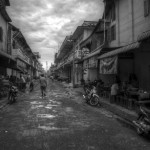
There are four major international donors to land rights development and reform in Cambodia: the World Bank, Germany, Finland and Canada. Their support spans multiple programs and several years with the overall objective of improving land tenure security and promoting stable land markets. ...
Quarrying
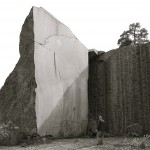
Small-scale quarries producing construction materials are a key part of the mining industry in Cambodia. Clay for brick and tile manufacturing and sand and gravel are found in many locations.Under the Law on Mineral Resource Management and Exploitation (‘the mining law’) there are six types ...
SDG 17 Partnerships for the goals

SDG 17 – “Strengthen the means of implementation and revitalize the global partnership for sustainable development” – is about bringing governments, civil society, the private sector and other actors together to help achieve the 2030 Agenda. There are 19 global targets and 25 indicators. The targets ...
National government
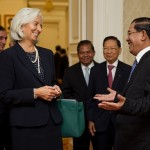
Cambodia is a constitutional monarchy. According to the 1993 Constitution, although he is the head of state, the king has very limited powers compared to the prime minister, the head of the government. Unlike the 1947 Constitution, power does not come from the king but ...
Forest cover
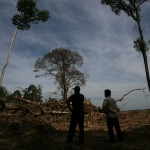
Cambodian forest cover has reduced dramatically in recent decades. In 1973 there were 13.1 million hectares of total forest, but by 2014 the total cover had fallen to 8.7 million hectares. ...
Head of state
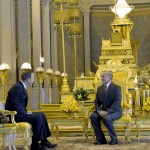
The Kingdom of Cambodia is a constitutional monarchy. The king is the head of state for his lifetime but does not govern. ...
Aid and development

Following the Paris Peace Accords signed in October 1991, Cambodia has received a significant amount of global support for its development and post-conflict work. In 2014, 30 – 40 percent of the country’s national budget is funded through development assistance, placing Cambodia among the most ...
Government services
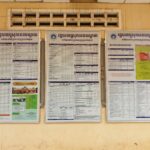
List of public services provided by One Window Service Office at Rotanak Mondol district hall in Battambang province. Photo by ODC team, taken on 28 February 2020. Licensed under CC BY-SA 4.0.Government services might be perceived as tools in pursuing the country’s development, and assuring ...
Securities exchange (stock market)
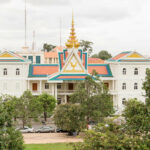
Starting from 2001, work began on promoting the formation of a Cambodian Stock Exchange (CSE or CSX) as a means of supporting the economic system in Cambodia’s development. A stock exchange facilitates the buying and selling of stocks among investors. Dr. Bit Seanglim, Chairman of ...
Extractive industries licensing and payments
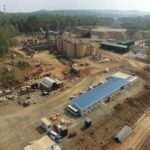
Overview of an industrial gold mine and refinery in Okvau. Photo taken from the Ministry of Mines and Energy’s Facebook Page, taken on 11 June 2021.Mineral resources are defined as “any substance, whether in solid, liquid or gaseous form, naturally originated by a geological process ...
Legal aid policy and regulation

Public policies are a system of laws, regulatory measures, and plans of action implemented by the government to ensure that its functions are performed predictably and consistently.359 Policies typically outline the guiding principles of an operation; meanwhile, regulations set procedural expectations. Currently, there are no ...
Biodiversity
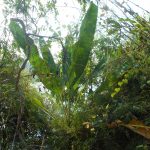
Biodiversity or Biological Resources: Various organisms in the same or different species and living organisms of all levels and sources, including land, marine and freshwater ecosystems, and the ecological relationships in which these ecosystems exist.377 Biodiversity is essential for most of the resources used by ...




